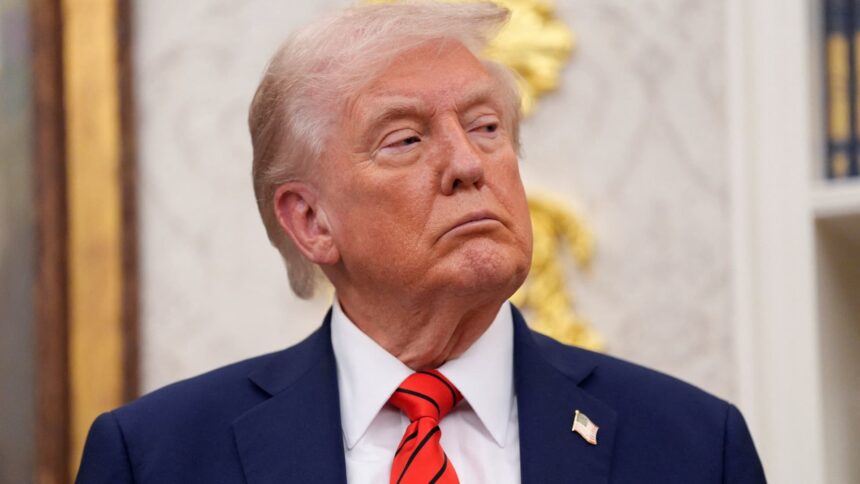U.S. President Donald Trump made a significant impact on the stock market with a single post on social media, resulting in a sharp decline and erasing approximately $2 trillion in market value. This incident underscores the considerable influence the president’s trade policies continue to exert on the U.S. economy and global markets.
On October 10, 2025, just before 11 a.m. ET, Trump took to his Truth Social platform to express concerns over China’s stance on rare earth metals. He labeled the country as “becoming very hostile” to the rest of the world and accused it of holding a “monopoly” on essential resources, stating that one of the policies being considered was a “massive increase of tariffs on Chinese products” entering the U.S. The immediate market response was dramatic, with the S&P 500 plummeting by 2.7%, marking its worst performance since early April.
The Nasdaq Composite, which includes many companies reliant on exports to China, fell 3.56%, and the Dow Jones Industrial Average lost 879 points, or 1.9%. Small-cap stocks, represented by the Russell 2000, also saw a significant decline, dropping 3%. The sudden market turmoil was largely fueled by concerns over escalating trade tensions, particularly in light of Trump’s comments on potential new tariffs.
Market observers had previously been optimistic regarding a resolution to ongoing trade discussions between the U.S. and China, especially with a meeting scheduled between Trump and Chinese leader Xi Jinping at the upcoming Asia-Pacific Economic Cooperation (APEC) summit. The prevailing sentiment had been that relations were improving, and investors had grown accustomed to the existing roughly 40% tariff rate, believing the U.S. economy was resilient enough to handle it.
However, Trump’s latest threats raised serious fears among investors. The U.S. economy remains heavily reliant on imported parts, which are necessary for various industries, including automotive and renewable energy. Traders were particularly worried about the implications of potential retaliatory measures from China, which could escalate the trade conflict into a full-scale war.
Adding to the market’s anxiety, China had recently intensified its control over the rare earths market, announcing that licenses would be required for exports involving these crucial materials, thereby heightening concerns about global supply chains. Given that rare earths are essential for manufacturing semiconductors and electric vehicles, Trump’s intentions to bolster U.S. domestic supplies through investment in mining operations in North America seemed to take on heightened significance.
The reaction from key tech stocks reflected the broader market’s panic. Nvidia’s shares fell over 5%, and AMD, which had been a standout performer, lost nearly 8%. Other tech giants, including Apple and Tesla, also saw declines, as the impact of rising tariffs would likely ripple through the supply chain.
Despite the sweeping nature of the sell-off, a handful of stocks showed signs of resilience, including Walmart and certain nicotine stocks, indicating a flight to perceived safer investments.
Moving forward, market analysts speculate that the effects of Friday’s dramatic drop could extend into the following week, as Trump suggested the new tariffs might begin soon, potentially disrupting any plans for negotiations with China. Traders expressed cautious optimism, suggesting that this could be a negotiating tactic rather than the precursor to immediate action, reminiscent of earlier market corrections that were followed by recoveries.
In a broader context, the volatility prompted by this unexpected social media announcement disrupted a period of unusual calm in the markets, characterized by 33 consecutive days without a 1% move in either direction for the S&P 500. With impending futures trading set to resume, market participants remain on edge, especially in light of concerns surrounding the financial stability of sectors connected to private lending and exposure to rising bankruptcies. The repercussions of Trump’s actions on both Wall Street and beyond will be closely monitored in the coming days.





